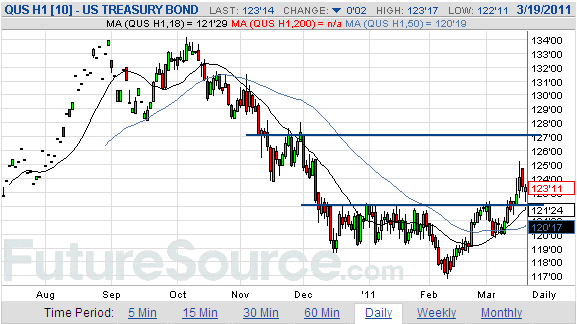Japan and the T-Bond
Steve Saville
email: sas888_hk@yahoo.com
Posted Mar 22, 2011
Below is an excerpt from a commentary originally posted at www.speculative-investor.com on 20th March 2011.
The Japanese government is the third largest holder of US treasuries (behind the Chinese government and the US Federal Reserve). Should we therefore expect some downward pressure on T-Bonds stemming from the Japanese government's efforts to finance earthquake-related reconstruction? In other words, is the government of Japan likely to become a seller of T-Bonds in the near future due to its need to raise money for the re-building effort?
In a word: no. There are good reasons to be bearish on T-Bonds, but potential T-Bond liquidation by the government of Japan is definitely not one of them.
A government that has the ability to issue new debt at a low interest rate and create new money (via the central bank) will generally not finance its activities by selling assets. It will, instead, finance its activities by creating more debt and more money. This is especially the case when it comes to Japan, because the last thing the Japanese government wants at this time -- and pretty much any other time -- is to put upward pressure on the Yen (selling US treasuries to purchase Yen would add to the upward pressure on the Yen).
If anything, an effect of the recent natural disaster in Japan will be increased demand for treasuries on the part of the Japanese government due to this government's misguided belief -- a belief that it shares with the governments of almost all countries -- that a weaker currency helps the economy. Therefore, the direct actions of the Japanese government are likely to be either neutral or bullish for US government bonds. These actions will, however, be bearish for Japanese government bonds, which means that the already-strong long-term bearish case for JGBs just got even stronger.
The main risk for US treasuries is the combination of a federal government that will be running huge deficits for years to come and a central bank that is being operated on the basis that the monetisation of these deficits will benefit the economy. This combination makes it almost inevitable that the US$ will lose a lot more purchasing power over the years ahead. Furthermore, many of the bad effects of the monetary inflation of the past 2.5 years still lie ahead. These bad effects include faster gains in consumer prices.
If Japan's natural disaster has negative consequences for US T-Bonds it will be because the hit to Japan's economy prompts the Fed to maintain an ultra-easy monetary policy for longer than would otherwise have been the case, rather than because the disaster prompts the Japanese government to sell treasuries.
Current Market Situation
In the 28th February Weekly Update we mentioned that a normal counter-trend rebound would take the T-Bond up to 126-127. The following daily chart shows that the June T-Bond futures contract almost made it to the bottom of this range last week.
It is possible that the T-Bond's rebound culminated last week, but it's more likely that additional gains are in store. We aren't planning to bet against the T-Bond, but if we were we'd probably wait for a move above 126 before beginning to scale in to a position.

###
Steve Saville
 email: sas888_hk@yahoo.com email: sas888_hk@yahoo.com
Hong Kong Regular financial market forecasts and analyses are provided at our web site:
http://www.speculative-investor.com/new/index.html. We aren't offering a free trial subscription at this time, but free samples of our work (excerpts from our regular commentaries) can be viewed at: http://tsi-blog.com
Copyright ©2002-2019 speculative-investor.com All Rights Reserved. Saville Archives
321gold Ltd

|

